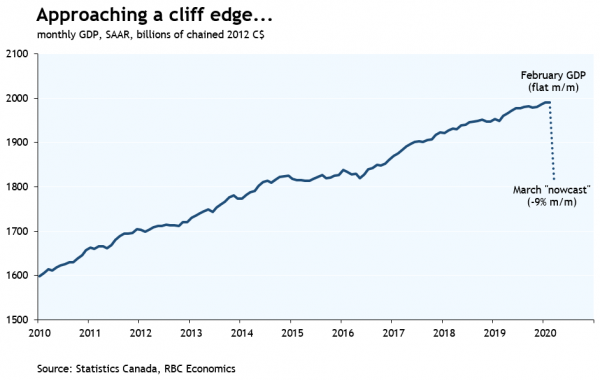- Canadian GDP was unchanged m/m in February
- Transportation disruptions and teachers’ strikes hurt growth
- StatCan still reporting a 10% annualized decline in Q1 GDP
Today’s GDP report provides a pre-pandemic snapshot of the economy, when Canada had no more than a dozen confirmed coronavirus cases. Factors that limited growth back then—a teachers’ strike in Ontario weighing on education services (-1.8% m/m), rail blockades and flight cancellations hitting the transportation sector (rail -5%, air -2.6%)—look like rounding errors next to StatCan’s “nowcast” showing a record 9% decline in March GDP. That estimate, and a 10% annualized decline in Q1 economic activity, were not changed by today’s regular monthly GDP report.
Timelier data points to another sharp decline in April GDP when containment measures were in place for the entire month. StatCan released a business survey yesterday (conducted throughout April) that reported more than half of Canadian businesses have seen their revenue fall by 20% or more, and a third have seen declines of more than 40% year-over-year. 40% of businesses said they had laid off employees and nearly one in five had cut 80% or more of their staff (hence the 7 million claims for income support since mid-March). Next week’s April labour force survey will give some indication of how that translated into economy-wide hours worked which were already down 15% in March. That will in turn firm up our estimate for April GDP, which StatCan seemed to hint could be released as another “nowcast” (i.e. before the scheduled release at the end of June). Whatever the number, we think it will tee up for an unprecedented decline in Q2 GDP.














